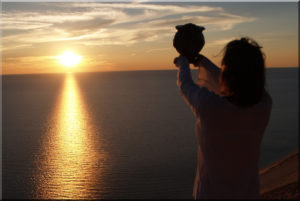
Credit: howstuffworks.com
In 1960, about 3.6 percent of the population opted for cremation. However, that number has risen steadily ever since. The Cremation Association of North America reports that in 2014, the national cremation rate reached 46.7 percent. That’s an astounding 1211.80 percent increase in 54 years. CANA expects the number to rise to 70.6 percent of the population by the year 2030.
What is the reason for this astronomical increase? CANA board president Sheri Stahl says it’s “primarily because people can personalize the way they want to memorialize friends and family, and because it is perceived as a more affordable, better value for memorialization.”
Cost most certainly contributes as well. According to the National Funeral Director’s Association, the median cost of a funeral with a burial is $7,181. The median cost of a funeral with cremation is $6,078. Further, some sources estimate that the average cost of cremation is even lower — between $2,000 and $4,000.
Traditional Burials Harm the Environment
But cost isn’t the only factor influencing the rapid rise in the number of cremations. An increased awareness about the environmental impact of burial is also affecting the trend. Embalming, a standard practice in the funeral industry, poses a real threat to both the morticians exposed to embalming fluid and to the land in the area surrounding cemeteries. Embalming fluid is a toxic cocktail of formaldehyde, ethanol, methanol and other organic solvents. After burial, it can leak from caskets into the ground, affecting nearby water supplies. Experts estimate that 827,000 gallons of embalming fluid go into the ground each year.
The formaldehyde in embalming fluids is of particular concern. The World Health Organization classifies it as a class 1 carcinogenic compound, and is linked to brain cancer and leukemia.
Apart from embalming fluid, caskets also tax the environment. They are generally made from unsustainable material like hardwood and metal, which decompose quite slowly. What’s more, caskets use an enormous amount of natural resources. Environmentalists estimate that the amount of wood in the caskets in a typical 10-acre cemetery is enough to build 40 houses. The sheer amount of land required to house casket upon casket underground is enormous as well.
Religious Attitudes Play a Role

Credit: smartcremation.com
Changing religious attitudes play a role in the rise of cremation rates too. The Catholic Church once forbade cremation. But in 1963, the Vatican lifted the cremation ban. Since 1997, the church has allowed funeral Masses for cremated remains.
The Cremation Association of North America also found that states with the highest cremation rates are states where fewer residents claim affiliation with an organized religion. Fewer religious people means fewer people that have to comply with religious teachings around funerals and burial practices.
Given its environmental and economic benefits, it is not surprising that cremation has become an appealing alternative that more and more people now recognize and embrace.

 Cremation Rates Exploding In The United States
Cremation Rates Exploding In The United States



 “Help Me, Helen”
“Help Me, Helen”















